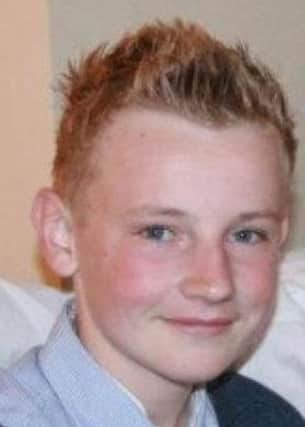Pledge to continue Hucknall road safety campaign as coroner gives verdict at Harrison Carlin inquest


Speaking at this week’s two day hearing into the circumstances which led to 15-year-old Harrison Carlin being killed whilst cycling along Forest Lane, Papplewick, coroner Mairin Casey recorded a narrative verdict.
This comment has made the Hucknall community more determined to continue their road safety initiative in a bid to save future lives.
Advertisement
Hide AdAdvertisement
Hide AdHarrison’s death on 1st July prompted a community-led campaign to reduce the speed limit on the stretch of road where he was killed. It also sparked two of Harrison’s friends from National Academy, where he was a pupil, to set up a charity called Put Things Right (PTR) to raise awareness of cycle safety.
Jack Chaplin and Corey Palin, whose efforts were recently recognised by a national award, joined forces with Hucknall teacher Ben Marshall to tackle the issues.
PTR joined forces with the police, council and road safety groups to not only educate within schools about road and cycle safety but fundraised and distributed cycle safety equipment with the proceeds to hundreds of youngsters across the Dispatch district.
“Whilst Harrison’s death was the catalyst for action, road safety had been on the community’s radar for a number of years and was a massive concern,” explained Ben Marshall who taught Harrison when he was younger. “Setting up PTR was not a knee-jerk reaction.”
Advertisement
Hide AdAdvertisement
Hide AdThe inquest heard that Daniel Kirk was driving a Mitsubishi car on 1st July 2012 when he collided with Harrison, who was thrown from his bike and pronounced dead at the scene by paramedics. Mr Kirk said he had been gradually increasing his speed as he approached the 60mph zone and didn’t see the teenager until it was too late.
A witness said the National Academy student had been cycling along the pavement when it came to an end so he joined the road after checking if it was clear.
But Mr Kirk said he had looked in his rear-view mirror at that point and didn’t see him come out.
The driver told the inquest he was travelling between 40mph and 50mph but forensic experts suggested this could have actually have been between 60-80mph.
Advertisement
Hide AdAdvertisement
Hide AdA police officer from the East Midlands Serious Collison Investigation Unit said it was likely Harrison had misjudged the speed Mr Kirk’s car had been travelling at.
“I wholeheartedly believe that Papplewick is a safer place because of the new speed reduction we campaigned for,” added Mr Marshall. “Our hopes are that pedestrians, drivers and cyclists will learn lessons from this incident and be more responsible for their own safety and other road users’ safety.”
No charges were brought against the driver at the time of the incident but following the inquest, the coroner said the Crown Prosecution Service would be sent a recording to re-examine the findings.
“Whatever happens following the inquest regarding any possible future prosecution against the driver, it isn’t going to bring Harrison back,” added Mr Marshall. “But PTR will be continuing with the objectives and are working with other agencies to push for the compulsory wearing of cycle helmets as well as raising awareness of the dangers of wearing headphones whilst cycling, which is one of the biggest challenges with young people.
Advertisement
Hide AdAdvertisement
Hide Ad“And in the new year PTR will be funding a Cycling Safety Champion for three days a week to spread the safety message further.”
The narrative verdict by Nottinghamshire Coroner Mairin Casey
On the 1st July 2012, Harrison Carlin was cycling his bicycle across the B6011 carriageway just outside of Papplewick Village. He was crossing from the offside to the nearside, in the direction of Mansfield Road. Harrison was wearing earphones, which may or may not have been in use at the time. The vehicle that struck Harrison had just been driven along a straight stretch of road, through a residential area which was subject to a maximum speed limit of 30mph. The driver gradually accelerated and exceeded the speed limit within the 30 mph zone, reaching an excessive speed of between 45 and 50mph on exiting that area. The collision occurred approximately 82m inside the area which was then subject to a speed limit of 60mph. I find that the likely speed at the point of collision was between 60 and 80mph, but on a balance of probabilities was most likely to be 70mph. The driver completely failed to observe Harrison at any time prior to the impact.
A spokesperson for the Crown Prosecution Service said:
“All decisions on whether to charge with a criminal offence are based on the Code for Crown Prosecutors, which applies a two-stage test. There must be sufficient evidence for a realistic prospect of a conviction and it must be in the public interest for a case to proceed. When a Coroner returns a narrative verdict on a case where a decision has been made not to charge on the grounds of insufficient evidence, the CPS can review evidence provided during the course of an inquest that was not considered as part of the original charging decision to see if there is any need to reconsider the decision not to charge.”